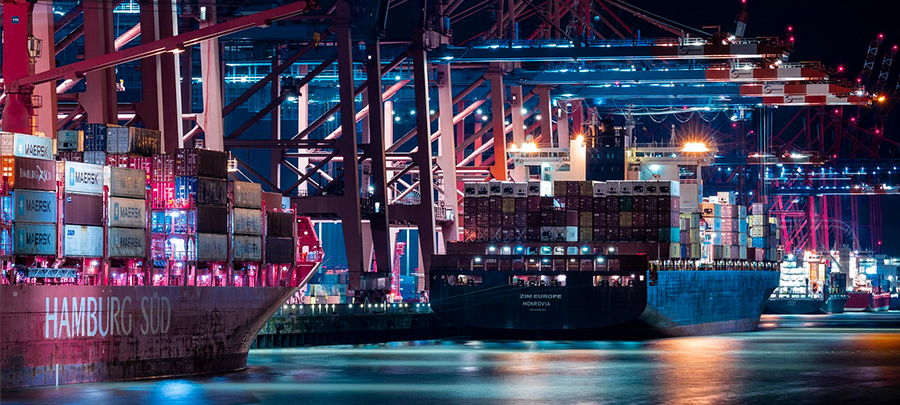

With global wine trade projected to continue its steady growth into 2025, there’s no better time to position your winery or wine brand for international success. This guide will explain the main steps of setting up exports and also offer tips that will help existing wine exporters to break into profitable global markets.
Exporting wine isn’t just about tapping into new customers—it helps diversify risks, balance out production cycles, and boost revenue by entering new markets. However, achieving success in wine exports requires thorough planning, a solid understanding of compliance, and the right tools.
This updated guide provides actionable steps, industry insights, and proven strategies to help you maximize your wine export potential.
Step 1: Assess Your Export Readiness
Before diving into international markets, it’s crucial to determine if your winery is fully prepared to export.
Identify High-Potential Wines
- Analyze your best-selling domestic wines (e.g., varietals, blends) for export suitability.
- Research global consumption trends, such as the rising popularity of sparkling wines, organic labels, or low-alcohol alternatives.
- Use trade data platforms, like the BestWineImporters trade/shipping data module, to gauge demand in specific countries.
Understand Legal & Compliance Requirements
Navigating regulations for wine exports is critical. Focus on:
- Export certifications: Depending on the market, you may need certifications such as European CE compliance, or other local approvals.
- Labeling & packaging: Adhere to each country’s requirements for language, alcohol content, health warnings, and region-of-origin statements.
- Shipping & tariffs: Familiarize yourself with duties, taxes, and any import restrictions to avoid unexpected costs.
Evaluate Costs & Pricing Strategies
- Factor in production, bottling, packaging, shipping, distributor margins, and currency exchange rates. BestWineImporters offers for example a free pricing calculator for the U.S. market
- Research local competitors to position your wines competitively without compromising profitability.
- Consider premium pricing for unique offerings (e.g., limited-edition or region-specific varietals).
Consider Potential Tariffs
Tariffs can significantly influence your export pricing and profitability. Keep an eye on evolving trade policies:
- Recent tariffs or trade disputes may affect certain wine categories or countries of origin.
- Look for free trade agreements (FTAs) that offer reduced or exempt tariffs on wine products.
- Consult with trade compliance experts or use digital tariff calculators to forecast costs and set appropriate prices.
Step 2: Research & Choose Your Export Markets
Analyze Global Market Trends
The wine industry is continually evolving. In 2025, top export opportunities include:
- Asia-Pacific: Growing interest in premium wines, especially from Japan. The Asia-Pacific wine market is projected to reach approximately USD 92.23 billion by 2030, growing at a Compound Annual Growth Rate (CAGR) of 6.85%
- North America (USA & Canada): Stable demand for a wide variety of wines, from value options to high-end labels. The fine wine market outlook for 2025 is cautiously positive, with particular optimism for regions like Piedmont, Champagne, and Burgundy. Additionally, the rising consumer interest in organic and biodynamic wines presents a niche market for importers to explore.
- Europe: Diverse markets with strong preferences for quality, heritage, and sustainability (organic, biodynamic wines).
Identify Best Market Fit
- Import regulations: Some countries have strict labeling rules, licensing requirements, or certification demands for wine.
- Demand & purchasing power: High-income markets often favor premium and specialty wines, while emerging markets, like the Easter European countries, look for affordable, quality offerings.
- Cultural preferences: Tailor your wine selection (e.g., sweet vs. dry, red vs. white) to local tastes.
Leverage Trade Data & B2B Platforms
- You will need access to a constant flux of updated importer contacts and industry insights specific to the wine sector to power your marketing and sales. The industry standard is the BestWineImporters platform, which this year celebrates 20 years of existence.
- Analyze customs data to pinpoint key trends and understand competitor activity in your target market.
Step 3: Build a Winning Export Plan
Once you’ve identified your ideal markets, develop a strategic plan to ensure success.
Set SMART Export Goals
Examples:
- Secure five new distributor partnerships in Asia within 12 months.
- Expand into three new markets by the end of 2025.
- Achieve €500,000 in export wine sales by year-end.
Develop a Sales & Marketing Strategy
- Digital Marketing: Optimize your website with multilingual pages, focus on SEO, and maintain a strong LinkedIn presence to attract international buyers.
- Trade Shows & Events: Attend leading wine expos like ProWein, Vinexpo, and Wine Paris to showcase your wines. A tool like the BestWineImporters platform can be invaluable for contacting importers and inviting them to your stand.
- Distributor Partnerships: Collaborate with wholesalers, importers, and wine brokers who have established distribution networks.
Optimize Logistics & Supply Chain
- Choose reliable freight forwarders experienced in handling wine shipments.
- Implement efficient inventory management to avoid shortages or spoilage.
- Maintain consistent quality and temperature control during transit.
Step 4: Find Importers & Buyers
In the wine industry, you’ll likely partner with:
- Importers: Purchase wine and resell to retailers, restaurants, and hospitality groups.
- Distributors: Manage local distribution, marketing, and sales efforts.
- Wholesalers: Buy in bulk and supply supermarkets, liquor stores, or restaurants.
- Brokers: Facilitate deals between wineries and buyers for a commission.
Use Data-Driven Prospecting Tools
BestWineImporters offers access to thousands of verified wine importers & distributors, and provides exactly the details that you will require for this step, like company details & contact info, key decision-makers for direct communication, financial information & trade data for market insights
Expand Your Online Presence
- Website Localization: Offer multilingual support and region-specific product pages.
- Social Media & B2B Marketplaces: Connect with distributors and wine enthusiasts on LinkedIn or specialized platforms like BevNET.
- SEO Investment: Target specific keywords (e.g., “import Italian wines” or “buy organic rosé”) to attract relevant leads.
Step 5: Secure & Grow Your Export Business
Strengthen Long-Term Partnerships
- Incentives: Provide volume discounts, exclusive labels, or priority allocations for key partners.
- Market Updates: Keep partners informed about industry trends, new releases, and competitor strategies.
- Consistency & Reliability: Maintain top product quality and on-time deliveries to earn importer trust.
Monitor Performance & Adapt
- Track sales growth, response rates, and customer feedback to measure success.
- Adjust pricing, marketing, and product lines based on evolving market preferences.
- Continually expand your network to reach new regions and buyer segments.
Final Thoughts
Exporting wine in 2025 offers significant growth opportunities for producers of all sizes. Success depends on strategic planning, thorough market research, and leveraging the right tools. By following this step-by-step guide, you’ll be well on your way to broadening your global reach, connecting with reliable importers, and boosting international sales.
Ready to take the next step?
Use BestWineImporters to access a verified database of wine importers and distributors. Start expanding your global presence today!





